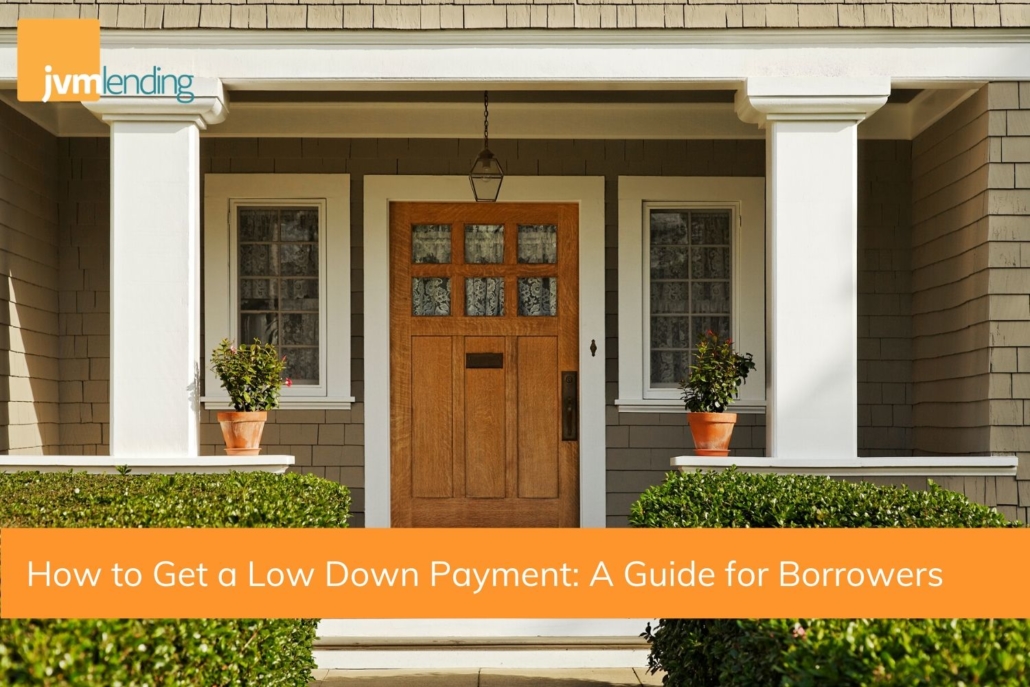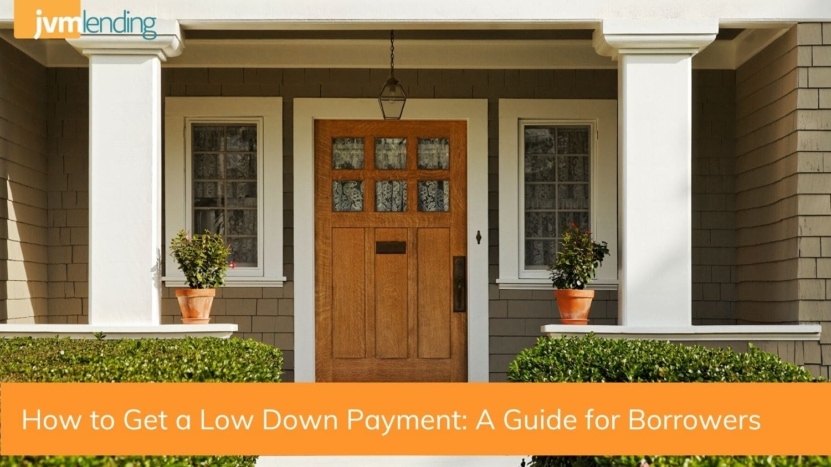
We’ve outlined a few of the ways borrowers can get a low down payment and how they may be able to obtain a portion of the money from a third-party source.
Low Down Payment Options
Homebuyers don’t always need a down payment of 20% to buy a house. Though 20% down is thought to be the standard, this is a common misconception. There are, in fact, several ways to get a low down payment when buying a home for both experienced and first-time buyers.
Here are some of the ways you can get a low down payment on your mortgage loan:
- Federal Housing Administration (FHA): A popular program that many homebuyers turn to is the FHA loan program because of its low down payment of 3.5%. This 3.5% comes from either the purchase price or the appraised value, whichever is less. Another perk of using the FHA loan program is that third-party donors can contribute gift funds. This means someone else, like a family member, can contribute toward your down payment.
- Conventional Loan With 3% Down: A common mortgage loan is a conventional loan. What sets this loan apart from an FHA is that it is not insured or guaranteed by the government. In the past, typically, the minimum down payment for a conventional home loan was 5% or more. Now we are seeing new mortgage products coming onto the market, some of which offer a low down payment of 3% for homebuyers. This is due to Fannie Mae and Freddie Mac (the government-sponsored enterprises who buy loans from lenders), allowing for 97% mortgage financing.
- VA Loan Program With 100% Financing: California and Texas have the highest populations of military members out of all the states. Many of these members are eligible for a low down payment through the VA loan program. VA loans offer 100% financing to eligible veterans or active military members. If a borrower is eligible, a VA loan is an excellent loan product as it has competitive rates and has more lax requirements compared to a conventional loan. For those who are able, a VA loan is one of the best ways to get a low down payment in high-cost areas like California or parts of Texas, like Austin, and usually has the added benefit of no mortgage insurance.
Gift Funds From Family, Friends, Etc.
Getting financial help, like a gift fund, from a relative or friend, is an additional way to help with the down payment expense when buying a home. Many of the different mortgage programs, like FHA loans and conventional loans allow for third-party contributions, such as gift funds.
It’s a reasonably straightforward process. A borrower would check with their local lender, like JVM Lending, to see what the options are for down payment gifts.
Depending on the loan type you use, the gift fund can come from family members, a close friend, or even an employer.
It is easiest for a donor to wait until a buyer is in contract, then wire the gift funds directly into the escrow account. This saves additional paperwork for all parties. If the funds were to be deposited into the borrower’s personal account, underwriters would require copies of checks, bank statements, or transaction histories from the donor to verify exactly where the funds came from.
Lastly, the person providing the gift funds must also provide a letter stating that there is no requirement or expectation of repayment for the funds as these are a gift.
For any questions about gift funds, reach out to our team, and we’ll be happy to help.
Mortgage Insurance Requirements
If you are pursuing a loan with a low down payment program, chances are there will be some form of mortgage insurance (MI). Mortgage insurance policies protect lenders from losses if a borrower defaults on the loan. MI is typically required for a loan where the loan-to-value ratio (LTV) exceeds 80%.
In other words, if you obtain a mortgage loan that makes up more than 80% of the home’s value, more than likely, there will be additional insurance required. MI can be removed at the request of the borrow once the LTV has reached 80%. Otherwise, the MI will be removed automatically by the loan servicer once the LTV has reached 78%.
It should be noted that for FHA loans, MI, (referred to as the mortgage insurance premium or MIP) can not be removed, as MIP is included for the life of the loan, and not contingent upon the LTV. You can have it removed only if you refinance into a non-FHA loan.
Learn more here about mortgage insurance.
Next Steps
When looking to purchase a home, coming up with a down payment can be the biggest hurdle a borrower will face. Various loan products and mortgage insurance offer solutions and provide low down payment options for a small monthly cost. Without these lower down payment options, the average homebuyer would have to delay their purchase and save for a much longer time. For many, the opportunity to put less money down offsets the relatively small additional monthly cost of MI.
Have any specific questions about down payments, gift funds, or MI? Our client advisors are happy to talk with you and answer any questions you may have and help you start planning your home purchase. Contact us here, give us a call at (855) 855-4491 or by email at [email protected] and a member of our team will be in touch to discuss down payment options for you.
























